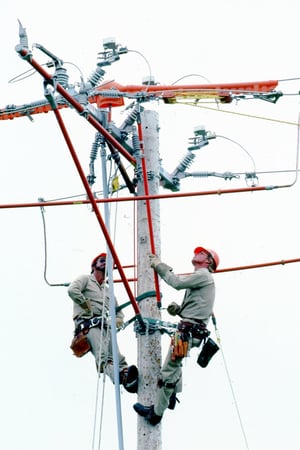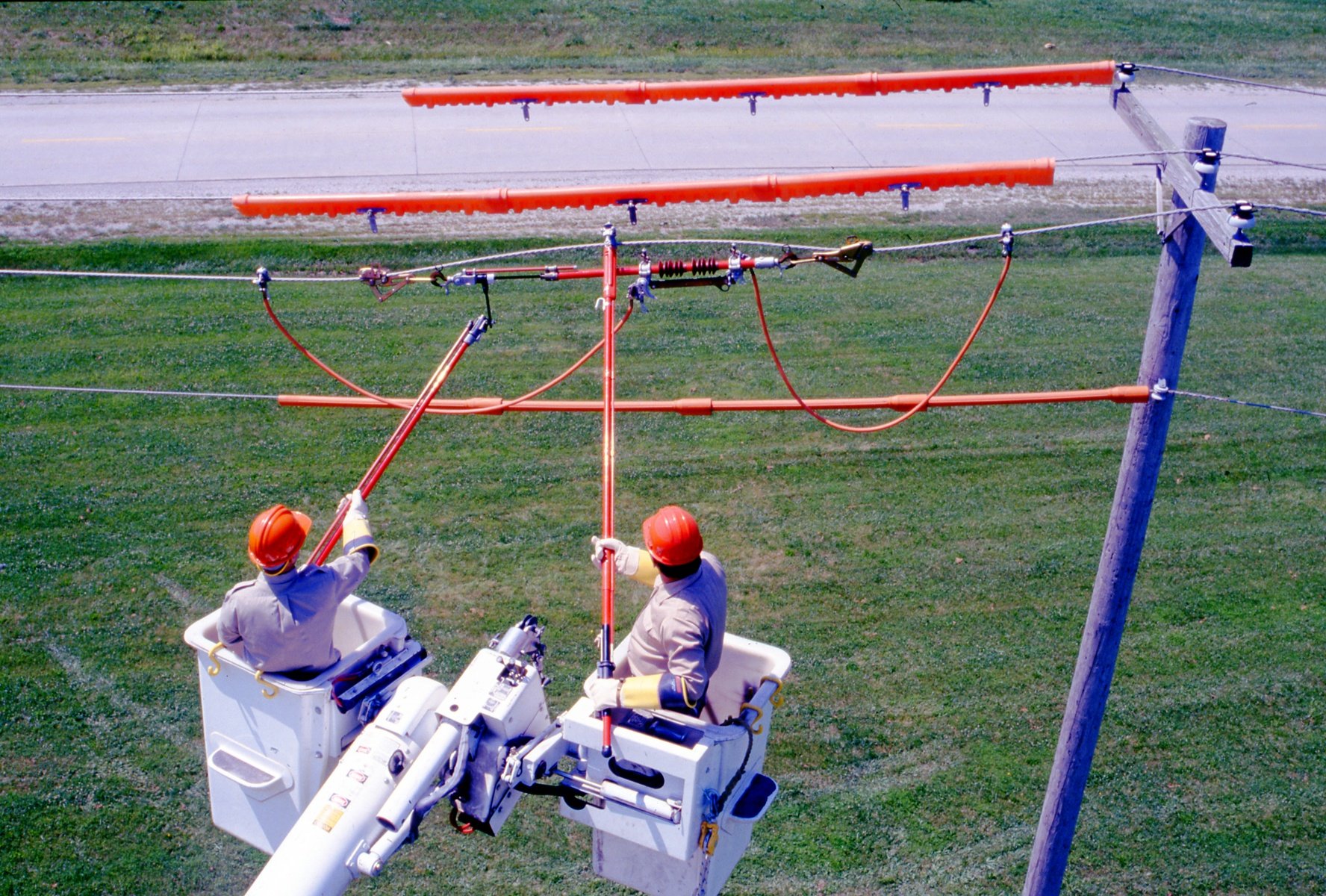Linemen often ask about the life expectancy of a hotstick. While there is no exact answer to this question, it can range anywhere from hours or days for a hotstick that is abused and damaged, to years or decades for a hot stick that is well cared for and maintained. While the hours or days is hopefully the exception, on occasion a hotstick does come back to the factory with tire tread marks on it or with damage that clearly indicates it was dropped from some height, probably around the height of the primary on a wood pole. While an “accident” can cut the life of a hot stick short, there are a number of steps in the care and maintenance of a hot stick that can result in many years or even decades of service and protection for the linemen using them.
Daily Cleaning
It only takes a few minutes, but sometimes does not get the time and attention it deserves. Cleaning the hotstick is an OSHA requirement and serves a couple purposes, both of which affect safety. First, is to remove contamination from the surface that could result in electrical tracking. This is a common-sense step for the safety of the lineman. Second, is to help protect the finish of the hotstick and maintain its hydrophobic properties.
Silicone impregnated wiping cloths or disposable Silicone Wipes are recommended for everyday cleaning. They both clean and leave a protective layer of silicone on the finish of the stick. For heavier contamination, Moisture Eater II wipes can be used. Moisture Eater II was designed specifically for cleaning hot sticks and will remove both contamination and moisture from the surface. It also removes silicone, so a Silicone Wipe should always be used after using Moisture Eater II.
Daily Visual Inspection
For safety, to identify hot sticks in need of repair, and to meet OSHA requirements, hotsticks should be thoroughly inspected before starting the job each day. The inspection should include verifying the proper operation of the hot stick and looking for damaged, missing, or loose components, a dull or worn out finish, fissures, scratches, cracks, gouges, evidence of electrical tracking, and any other form of damage that could affect the mechanical and/or insulating properties of the hotstick. If the hotstick is suspect or damaged, immediately remove it from service.
Care and Storage
At the job site, stands or tarps are recommended to keep hotsticks off the ground and out of the mud and dirt. During handling, avoid prying with the hotstick, dropping the hotstick, and other impacts that could result in damage. Protective tubes, bags or racks that are specifically designed for hotsticks are recommended for storing hotsticks during transport and when not in use.
Testing
Electrical testing of hot sticks is recommended a minimum of once every two years and at any time the insulating properties of the hotstick are in question. More frequent periodic testing may be warranted depending on frequency of use, work conditions, level of care, etc. Electrical testing is also required after any repair. Cleaning the hotstick with Moisture Eater II before testing will provide more accurate results. A hot stick with a worn finish can be made to falsely pass with enough silicone or wax applied to the surface, but the hotstick should provide the protection and pass the test, not the layer of silicone or wax. If the hotstick fails electrical testing, it should be kept out of service. A qualified and competent person should determine the issue, make repairs if possible, and the hotstick should be tested again and pass before being returned to service.
Repairing and Refinishing Hotsticks
In many cases a worn surface and minor damage to hotsticks can be repaired, extending the service life. Some of the more common repairs include replacing missing or damaged components, repairing fissures or scratches on the surface, or refinishing the surface. Repair kits are available such as the CHANCE® Epoxiglas® Bond Patch Kit and CHANCE Epoxiglas Gloss Restorer Kit. Repairs should be made by a qualified and competent person following the manufacturer’s instructions. Don’t forget to electrically test the hotstick before returning it to service.
With the safety of the lineman at stake, careful attention should be paid to these recommendations. They will also preserve the hotsticks and extend their service life.






